Best Practices and Guidelines for Responsible Horse Breeding
Breeding horses is a significant responsibility that goes beyond the excitement of producing a foal. It demands a deep understanding of genetics, health, and the long-term impact on the horse population. Responsible breeding practices ensure that we create healthy, well-tempered horses that can lead productive lives, whether in sport, work, or companionship.
The importance of responsible breeding cannot be overstated. By carefully selecting breeding pairs and maintaining high standards, we can help prevent genetic disorders and enhance the overall health and performance of future generations of horses. This careful, thoughtful approach reduces the likelihood of health issues that can affect a horse’s quality of life and longevity.
Ethical considerations play a crucial role in responsible breeding. As breeders, we must prioritize the well-being of the horses over the potential financial gains. This includes ensuring that both the mare and stallion are in optimal health, providing proper care throughout the breeding and foaling process, and making thoughtful decisions about the future of the foal.
In the long run, responsible breeding practices contribute to the sustainability and improvement of horse breeds. They help preserve the unique qualities and characteristics that make each breed special while minimizing the risk of inherited health problems. By adhering to these guidelines, breeders can positively impact the equine community, creating healthier, happier horses for generations to come.
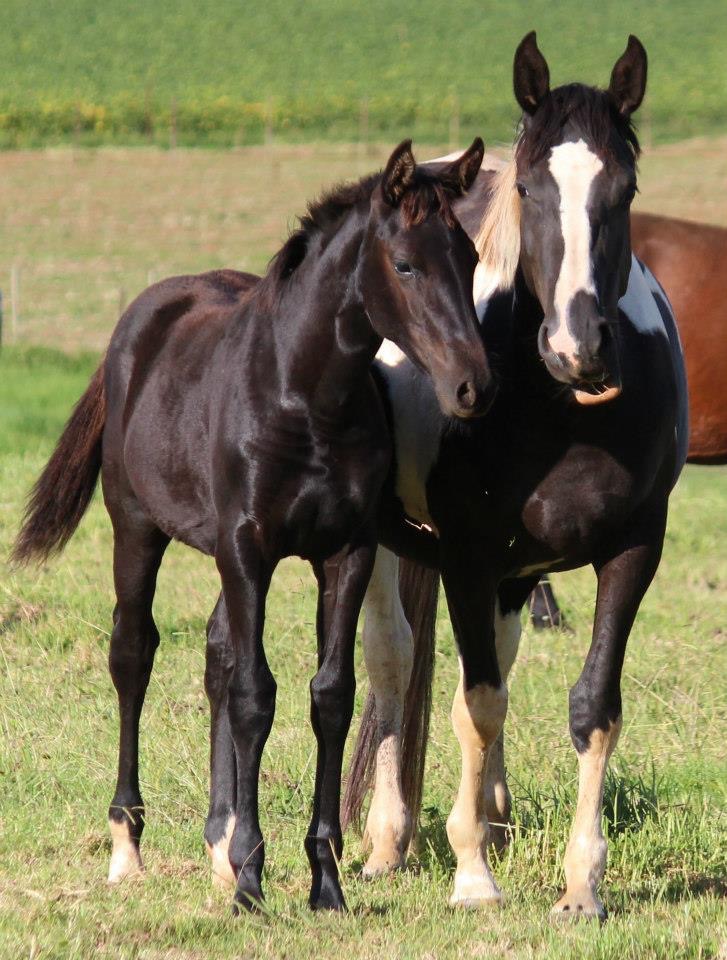
Understanding Genetics and Heredity
When it comes to breeding horses, understanding genetics and heredity is crucial. Genetics is the study of how traits are passed from parents to offspring. These traits can include everything from coat color and size to temperament and performance abilities.
Basic Genetic Principles
At the heart of genetics are genes, which are units of heredity made up of DNA. Horses inherit one set of genes from each parent, and these genes can combine in various ways to produce different traits. Some traits are controlled by a single gene, while others are influenced by multiple genes.
Dominant and Recessive Traits
- Dominant traits require only one gene from one parent to be expressed.
- Recessive traits require a gene from both parents to be expressed.
Understanding which traits are dominant and which are recessive helps breeders predict the characteristics of future foals.
Importance of Genetic Diversity
Genetic diversity refers to the variety of genes within a population. High genetic diversity is essential for the overall health and resilience of a breed. It reduces the risk of inherited disorders and allows the population to adapt to changes in the environment. Breeding horses with a diverse gene pool can lead to stronger, healthier offspring with a better chance of thriving.
Avoiding Common Genetic Disorders
Certain genetic disorders are more prevalent in specific breeds due to a lack of genetic diversity and the presence of harmful recessive genes. Responsible breeders test for these disorders and avoid breeding horses that carry genes for these conditions.
Common genetic disorders to be aware of include:
- Hyperkalemic Periodic Paralysis (HYPP): A muscle disease that can cause severe muscle weakness.
- Hereditary Equine Regional Dermal Asthenia (HERDA): A skin disorder that results in fragile skin prone to lesions.
- Polysaccharide Storage Myopathy (PSSM): A muscle disease that affects energy storage and utilization.
By testing breeding pairs and carefully planning matings, breeders can reduce the incidence of these disorders in the foal population.
Understanding and applying basic genetic principles is essential for responsible breeding. By prioritizing genetic diversity and being vigilant about avoiding genetic disorders, breeders can produce healthier, more robust horses. This not only benefits the individual animals but also strengthens the breed as a whole, ensuring a bright future for our equine companions.

Choosing the Right Stallion and Mare
Selecting the right stallion and mare is one of the most critical decisions in responsible horse breeding. This choice lays the foundation for the quality, health, and potential of the foal. Here’s what you need to consider:
Criteria for Selecting Breeding Pairs
When choosing a breeding pair, it’s essential to have clear goals. Are you aiming for a performance horse, a show horse, or a companion animal? Your goals will guide your selection criteria, which should include health, temperament, conformation, pedigree, and performance history.
Evaluating Health
Health is paramount in breeding decisions. Both the stallion and mare should be free from hereditary diseases and genetic disorders. A comprehensive veterinary examination is necessary to assess overall health, including soundness, respiratory function, and reproductive health. Ensuring that both horses are up-to-date on vaccinations and free from contagious diseases is also crucial.
Temperament
A horse’s temperament can significantly impact its trainability, performance, and suitability for various activities. Select breeding pairs with temperaments that align with your breeding goals. For example, a calm and steady temperament might be ideal for a companion horse, while a more spirited yet manageable temperament could be preferable for a performance horse. Observing the behavior of both the stallion and mare in different situations can give insights into their temperaments.
Conformation
Assessing conformation helps predict the physical capabilities and potential soundness of the foal.
Horse conformation refers to the physical structure, musculature, and overall build of a horse. It is an essential consideration when selecting stallions and mares for breeding purposes, as conformation plays a crucial role in determining the horse’s suitability for specific disciplines, its athleticism, and its potential for passing on desirable traits to offspring.
When evaluating the conformation of a stallion or mare for breeding, here are some key aspects to consider:
- Head and Neck: Look for a well-proportioned head with a broad forehead, large eyes, and refined features. The neck should be of appropriate length, muscular, and well-arched to provide balance and flexibility.
- Shoulders: Ideal shoulders should be sloping and well-muscled, allowing for a free and efficient movement of the front legs. Upright shoulders can restrict stride length and increase the risk of injury.
- Front Legs: Evaluate the straightness, angle, and bone density of the front legs. Ideally, they should be straight when viewed from the front and side, with well-defined knees and short, strong cannons.
- Topline: The topline should be muscular and well-proportioned, with a slightly sloping croup for balanced movement and impulsion. A long, level back is desirable for many disciplines.
- Hindquarters: Strong, well-muscled hindquarters are essential for power and propulsion. Look for a well-angled hip, deep quarters, and a well-defined gaskin (the muscular area between the stifle and hock).
- Hind Legs: The hind legs should be straight and well-aligned, with strong hocks and short, dense cannon bones. Proper angulation is crucial for efficient propulsion and movement.
- Hooves and Pasterns: Evaluate the size, shape, and quality of the hooves, as well as the angle and length of the pasterns. Ideal pasterns should have a moderate slope, providing shock absorption and support.
- Balance and Symmetry: Overall balance and symmetry are essential for a horse’s athleticism and soundness. Evaluate the proportions and alignment of all body parts to ensure a harmonious and functional structure.
By carefully evaluating the conformation of both the stallion and mare, breeders can increase the likelihood of producing offspring with desirable traits, such as athletic ability, soundness, and suitability for specific disciplines. It’s important to consider not only individual traits but also how they contribute to the overall balance and functionality of the horse.
Importance of Pedigree and Performance History
A horse’s pedigree provides valuable information about its genetic background. Studying the lineage of both the stallion and mare can reveal strengths, weaknesses, and potential genetic issues. Look for ancestors with desirable traits and successful performance records.
Performance history is equally important. Horses that have excelled in their respective disciplines are more likely to pass on those desirable traits to their offspring. Evaluate the competitive records, achievements, and versatility of the stallion and mare. Breeding horses with proven performance histories increases the likelihood of producing a foal with similar capabilities.
Choosing the right stallion and mare is a process that requires careful evaluation of health, temperament, conformation, pedigree, and performance history. By making informed and deliberate breeding decisions, you can improve the quality and potential of your foals, contributing to the betterment of the breed and ensuring the well-being of future generations.
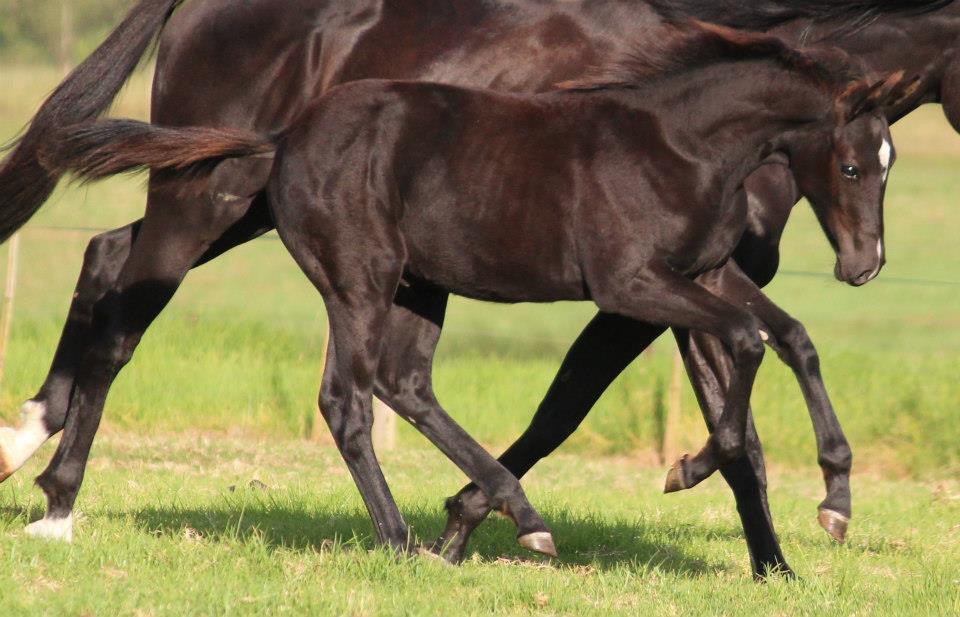
Health and Veterinary Care
Ensuring the health and well-being of breeding horses is crucial for successful and responsible breeding. Proper veterinary care, vaccinations, and nutrition are fundamental components of maintaining a healthy breeding program.
Pre-Breeding Health Checks
Before breeding, both the stallion and mare should undergo thorough health examinations. These checks help identify any underlying health issues that could affect fertility, pregnancy, or the health of the foal. Key aspects of pre-breeding health checks include:
- Reproductive Health: Assessing the reproductive organs to ensure they are healthy and functioning correctly.
- General Health: Evaluating the overall health of the horse, including checking for any chronic conditions or infectious diseases.
- Soundness: Ensuring the horse is sound, with no issues that could impact its ability to breed or carry a foal.
These checks should be conducted by a qualified veterinarian with experience in equine reproduction.
Importance of Vaccinations and Regular Veterinary Care
Vaccinations are essential for protecting breeding horses from contagious diseases that could harm them or their offspring. Core vaccinations typically include tetanus, influenza, and West Nile virus, among others. Discuss with your veterinarian to develop a vaccination schedule tailored to your horse’s needs and the specific risks in your area.
Regular veterinary care goes beyond vaccinations. It includes routine check-ups, dental care, deworming, and monitoring for any signs of illness or injury. Keeping breeding horses in optimal health requires continuous attention and preventive care.
Nutritional Needs of Breeding Horses
Nutrition plays a vital role in the health and reproductive success of breeding horses. Both the stallion and mare need a balanced diet that supports their energy needs, reproductive health, and overall well-being.
- Mares: Nutritional needs increase significantly during pregnancy and lactation. A diet rich in high-quality forage, supplemented with grains and concentrates as needed, ensures the mare receives adequate protein, vitamins, and minerals. Special attention should be given to calcium and phosphorus levels to support fetal development and milk production.
- Stallions: While the nutritional needs of stallions are generally less demanding than those of pregnant mares, they still require a balanced diet to maintain energy levels and reproductive health. High-quality forage, along with appropriate concentrates, can help meet their nutritional requirements.
In both cases, access to clean, fresh water is essential. Additionally, it might be beneficial to consult with an equine nutritionist to tailor the diet to the specific needs of your breeding horses.
Maintaining the health of breeding horses through pre-breeding health checks, regular veterinary care, vaccinations, and proper nutrition is fundamental for successful breeding. These practices ensure that both the stallion and mare are in peak condition, increasing the likelihood of a healthy pregnancy and foal. By prioritizing health and veterinary care, you contribute to the well-being of your horses and the future of the breed.

Ethical Breeding Practices
Ethical breeding is essential to maintaining the health and well-being of horses. It requires careful consideration of breeding age and frequency, avoiding overbreeding, and ensuring proper care for all offspring. Additionally, responsible breeders must consider the future of each foal, ensuring they have potential homes and uses.
Breeding Age and Frequency Recommendations
Choosing the right age for breeding is crucial for both mares and stallions. Breeding horses too young or too old can lead to health issues and complications.
- Mares: Mares should be at least three years old before their first breeding. This ensures they are physically mature enough to handle pregnancy and foaling. Ideally, mares should not be bred past 15-16 years old, although some mares can safely breed beyond this age with proper care and veterinary oversight.
- Stallions: Stallions can begin breeding as early as two years old, but it’s often better to wait until they are at least three to ensure they are fully mature and capable of handling the physical demands of breeding.
The frequency of breeding should also be carefully managed. Overbreeding can exhaust a mare and compromise her health. Typically, giving a mare a break between pregnancies can be beneficial. Stallions should also be managed to avoid overuse, which can lead to physical and psychological stress.
Avoiding Overbreeding and Ensuring Proper Care for All Offspring
Overbreeding can lead to an excess of horses, making it difficult to provide adequate care and find suitable homes for all offspring. Responsible breeders should aim to produce only as many foals as they can care for and place in good homes.
Proper care for all offspring involves:
- Health and Veterinary Care: Regular check-ups, vaccinations, and preventive care.
- Nutrition: Ensuring foals receive adequate nutrition from birth through weaning and beyond.
- Training and Socialization: Early handling and exposure to various environments help foals develop into well-adjusted, trainable horses.
By avoiding overbreeding and committing to the care of each foal, breeders can ensure that all horses receive the attention and resources they need to thrive.
Considering the Future of the Foal
Responsible breeders must think about the future of each foal, including potential homes and uses. This involves:
- Matching Foals with Suitable Owners: Finding owners who can meet the physical and emotional needs of the horse. This often means considering the owner’s experience level, facilities, and future plans for the horse.
- Identifying Potential Uses: Breeding with a purpose helps ensure foals have a clear path, whether it’s in competition, work, or companionship. Understanding the strengths and weaknesses of the breeding pair can help predict the foal’s potential.
- Providing Support and Guidance: Offering advice and support to new owners can help ensure the foal’s well-being and successful integration into its new environment.
Ethical breeding practices prioritize the welfare of the horses over profit or convenience. By following age and frequency recommendations, avoiding overbreeding, and considering the future of each foal, breeders can contribute to a healthier, more sustainable horse population. This approach ensures that all horses have the opportunity to lead fulfilling lives in suitable, caring homes.

Record Keeping and Documentation
Maintaining meticulous records is a cornerstone of responsible horse breeding. Detailed documentation supports informed breeding decisions, helps track the health and performance of horses, and ensures compliance with legal and breed organization requirements.
Importance of Detailed Records for Breeding Decisions
Accurate and comprehensive records are essential for making informed breeding choices. These records provide a wealth of information about the genetics, health, and performance history of breeding pairs, allowing breeders to:
- Identify Suitable Breeding Pairs: Detailed records help assess compatibility between stallions and mares, increasing the likelihood of producing healthy, high-quality offspring.
- Avoid Genetic Disorders: By tracking genetic traits and health histories, breeders can minimize the risk of passing on hereditary diseases.
- Monitor Breeding Outcomes: Reviewing past breeding results helps refine future breeding strategies and improve overall breeding program quality.
Tracking Health, Breeding Cycles, and Offspring Performance
Maintaining detailed records involves tracking several key aspects of horse breeding:
- Health Records: Documenting veterinary visits, vaccinations, deworming, and any health issues ensures horses receive appropriate care. Health records also help identify potential hereditary problems.
- Breeding Cycles: Keeping track of mares’ estrous cycles, breeding dates, and pregnancy progress is crucial for timing breedings and monitoring reproductive health.
- Foaling Records: Detailed foaling records, including birth dates, foaling conditions, and any complications, provide valuable information for future breeding decisions.
- Offspring Performance: Recording the performance and development of offspring, from initial training to competition results, helps assess the success of breeding pairs. This data informs future breeding strategies and supports the selection of breeding pairs that produce successful foals.
Legal Requirements and Registration with Breed Organizations
Compliance with legal requirements and breed organization regulations is essential for responsible breeding. This involves:
- Registration: Registering horses with relevant breed organizations ensures their pedigree and breeding history are officially documented. This is crucial for establishing the horse’s value and eligibility for competitions or breeding.
- Transfer of Ownership: Accurate records are necessary for transferring ownership, ensuring legal and transparent transactions.
- Compliance with Regulations: Breed organizations often have specific guidelines for breeding practices, health checks, and record keeping. Adhering to these guidelines ensures breeders meet industry standards and maintain the integrity of the breed.
Record keeping and documentation are vital aspects of responsible horse breeding. Detailed records support informed breeding decisions, track the health and performance of horses, and ensure compliance with legal and breed organization requirements. By maintaining meticulous records, breeders can enhance the quality of their breeding programs, produce healthier and more successful horses, and contribute positively to the equine community.
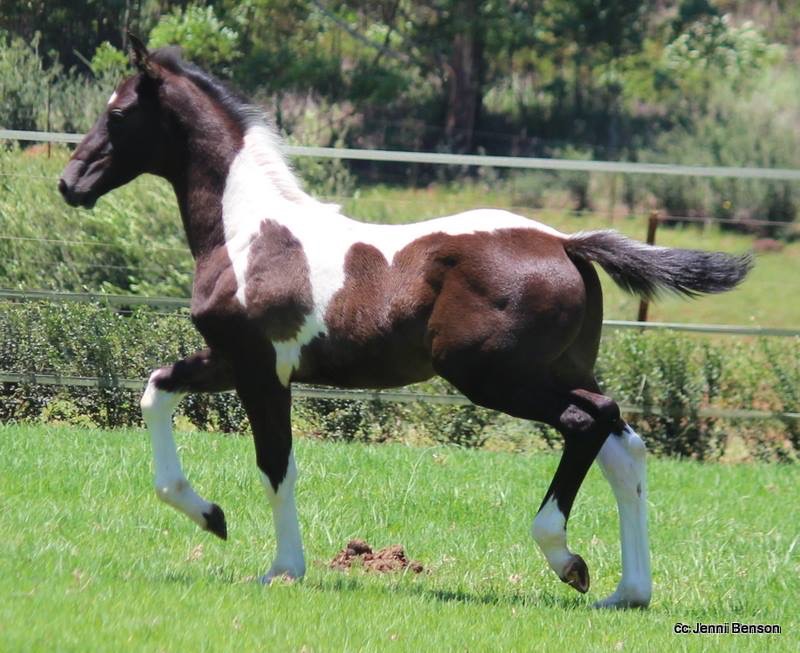
Foaling and Early Care
Proper preparation and care during foaling and the early stages of a foal’s life are critical for ensuring the health and well-being of both the mare and the foal. This involves setting up suitable facilities, having the right equipment, creating emergency plans, and providing comprehensive postpartum care and socialization.
Preparing for Foaling
Facilities
- Foaling Stall: A clean, spacious, and well-ventilated foaling stall is essential. The stall should be at least 12×12 feet, with soft bedding such as straw to provide comfort and safety.
- Hygiene: Ensure the foaling area is thoroughly cleaned and disinfected before the mare is brought in. Maintain high standards of hygiene to prevent infections.
- Quiet Environment: The foaling area should be quiet and free from disturbances to keep the mare calm and reduce stress.
Equipment
- Foaling Kit: A well-stocked foaling kit should include clean towels, sterile gloves, iodine solution for the umbilical cord, scissors, a flashlight, and a watch to time contractions and labor stages.
- Communication Tools: Keep a phone or communication device handy to contact the veterinarian quickly if needed.
- Monitoring Devices: Consider using foaling alarms or cameras to monitor the mare without disturbing her.
Emergency Plans
- Veterinarian Contact: Have your veterinarian’s contact information readily available and inform them of the expected foaling date.
- Transport Arrangements: Prepare for potential emergencies by having a trailer ready for transport to a veterinary clinic if necessary.
- Action Plan: Develop a clear action plan outlining steps to take in case of complications, including when to call the vet and how to assist the mare if needed.
Care of the Mare and Foal Postpartum
Post-Foaling Care for the Mare
- Observation: Monitor the mare closely for signs of distress or complications such as retained placenta or excessive bleeding.
- Nutrition: Provide the mare with high-quality forage and fresh water. Nutritional needs will increase during lactation, so consider supplements if recommended by your vet.
- Rest and Recovery: Allow the mare to rest and recover in a quiet environment. Limit strenuous activities for a few days postpartum.
Post-Foaling Care for the Foal
- Initial Assessment: Immediately after birth, check the foal’s breathing and ensure the airway is clear. The foal should attempt to stand within an hour and begin nursing within two hours.
- Umbilical Cord Care: Dip the umbilical cord stump in iodine solution to prevent infection.
- Colostrum Intake: Ensure the foal receives colostrum (the mare’s first milk) within the first few hours, as it contains essential antibodies for immunity.
Early Handling and Socialization of the Foal
Early Handling
- Gentle Introduction: Begin handling the foal gently within the first few days. This includes touching, rubbing, and lifting the feet to accustom the foal to human interaction.
- Consistency: Handle the foal consistently but for short periods to build trust and reduce stress.
Socialization
- Interaction with Other Horses: Gradually introduce the foal to other horses in a safe and controlled manner. Social interaction is vital for the foal’s behavioral development.
- Exposure to Different Environments: Expose the foal to various environments, sounds, and experiences to build confidence and reduce fear of new situations.
- Basic Training: Start basic training such as leading, haltering, and standing tied. Early training helps the foal develop good manners and responsiveness.
Proper preparation and care during foaling and the early stages of a foal’s life are crucial for their health and development. By ensuring suitable facilities, having the right equipment, creating emergency plans, and providing comprehensive postpartum care and early socialization, breeders can give their foals the best possible start in life. This commitment to care and attention helps raise healthy, well-adjusted horses ready for their future roles.
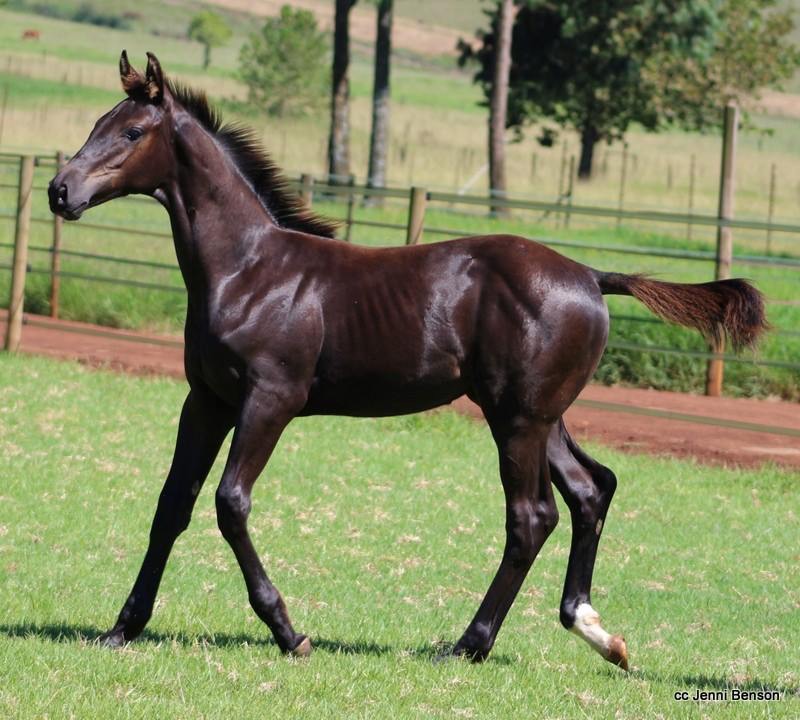
Evaluating and Selecting Foals for Future Breeding
Selecting the right foals for future breeding is a critical step in maintaining and improving the quality of your breeding program. This process involves assessing the foal’s potential based on specific criteria, considering long-term breeding goals, and balancing performance and temperament traits.
Criteria for Selecting Foals with Breeding Potential
When evaluating foals for future breeding, several key factors should be considered:
- Conformation: Assess the foal’s physical structure for correctness and balance. Look for strong legs, a straight back, and overall symmetry. Good conformation reduces the risk of future soundness issues and enhances performance potential.
- Health: Ensure the foal is free from genetic disorders and has a robust immune system. Regular veterinary check-ups and genetic testing can help identify any underlying health concerns.
- Pedigree: Review the foal’s lineage to understand the genetic strengths and weaknesses. A strong pedigree with successful ancestors in your desired discipline increases the likelihood of the foal’s success.
- Movement: Observe the foal’s natural gaits. Look for fluid, balanced movement with good reach and impulsion. Quality movement is often indicative of future performance potential.
- Temperament: Evaluate the foal’s behavior and interaction with humans and other horses. A calm, trainable temperament is essential for any breeding program, as it impacts the foal’s trainability and suitability for various activities.
Importance of Long-Term Planning and Goals for the Breeding Program
Effective breeding programs require long-term planning and clear goals. Here’s why:
- Consistency: Consistent breeding practices help maintain and enhance desirable traits within your breeding stock.
- Improvement: Long-term planning allows you to identify areas for improvement in your breeding program, such as addressing specific weaknesses or enhancing particular strengths.
- Sustainability: Setting long-term goals ensures the sustainability of your breeding operation, helping you produce quality horses that meet market demands and uphold breed standards.
Your breeding goals should align with the broader objectives of the breed or discipline you are focusing on, whether it’s producing top-level competition horses, reliable workhorses, or well-tempered companion animals.
Balancing Performance and Temperament Traits
Striking the right balance between performance and temperament is crucial for breeding successful and versatile horses:
- Performance Traits: High-performance potential is essential, especially if your breeding program aims to produce horses for competitive disciplines. This includes traits like speed, agility, endurance, and strength.
- Temperament Traits: Equally important is a good temperament. Horses with a calm, cooperative, and trainable nature are easier to work with and more versatile. They are also more likely to find suitable homes and adapt to various roles, from competition to companionship.
When selecting foals, consider how well they exhibit a balance of these traits. A high-performing horse with a difficult temperament may be challenging to manage, while a horse with an excellent temperament but limited performance potential might not meet your breeding goals.
Evaluating and selecting foals for future breeding requires careful consideration of conformation, health, pedigree, movement, and temperament. Long-term planning and clearly defined goals are essential for maintaining and improving your breeding program. By balancing performance and temperament traits, you can produce horses that excel in their disciplines and possess the qualities needed for a successful and sustainable breeding operation.
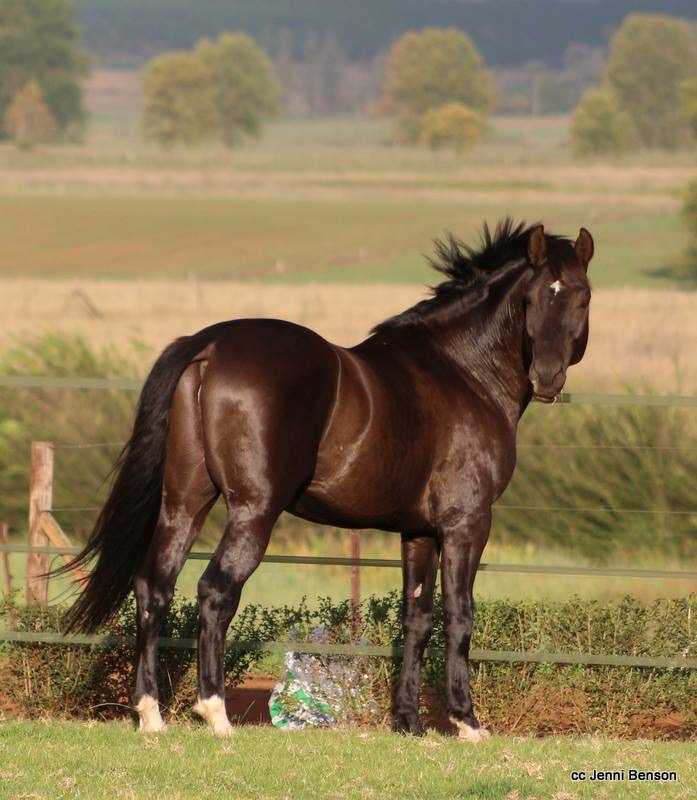
Education and Continuous Improvement
In the ever-evolving field of horse breeding, staying informed and continuously improving your knowledge and practices are vital for maintaining a successful breeding program. This involves keeping up with the latest advances in breeding technology, networking with other breeders, and engaging in continuous learning through various educational opportunities.
Staying Informed About Advances in Breeding Technology and Practices
The field of horse breeding is constantly advancing, with new technologies and practices emerging that can enhance breeding outcomes and improve horse health. Staying informed about these developments is crucial for any serious breeder:
- Genetic Testing: Advances in genetic testing allow for more accurate identification of desirable traits and potential genetic disorders. Utilizing these tests can help you make more informed breeding decisions.
- Reproductive Technologies: Innovations such as artificial insemination, embryo transfer, and cryopreservation of semen and embryos provide more options for breeding and genetic diversity.
- Health and Nutrition: New research in equine health and nutrition can lead to better care practices, improving the well-being of both breeding horses and their offspring.
Regularly reading scientific journals, industry publications, and online resources can help you stay updated on the latest advancements and incorporate them into your breeding program.
Networking with Other Breeders and Attending Industry Events
Building a network of fellow breeders and industry professionals is invaluable for sharing knowledge, experiences, and best practices. Engaging with the breeding community can provide support, inspiration, and opportunities for collaboration:
- Breeding Associations: Join local, national, and international breeding associations. These organizations often provide resources, support, and platforms for connecting with other breeders.
- Industry Events: Attend horse shows, breeding expos, and industry conferences. These events are excellent opportunities to learn from experts, see new technologies in action, and discuss trends and challenges with peers.
- Online Forums and Social Media: Participate in online forums and social media groups dedicated to horse breeding. These platforms can be valuable for exchanging ideas, asking questions, and staying connected with the breeding community.
Continuous Learning Through Courses, Seminars, and Research
Commitment to continuous learning is essential for improving your breeding practices and staying competitive in the industry:
- Educational Courses: Enroll in courses offered by universities, veterinary schools, and equine organizations. These can cover a wide range of topics, from genetics and reproductive health to nutrition and foal care.
- Seminars and Workshops: Attend seminars and workshops led by experts in the field. These events often provide hands-on learning experiences and in-depth knowledge on specific aspects of breeding.
- Research: Conduct your own research and studies on breeding practices, health management, and foal development. Keeping detailed records and analyzing your breeding program’s outcomes can provide valuable insights and areas for improvement.
Education and continuous improvement are fundamental to the success of any horse breeding program. By staying informed about advances in breeding technology, networking with other breeders, and engaging in continuous learning through courses, seminars, and research, you can enhance your breeding practices and ensure the health and quality of your horses. This commitment to ongoing education not only benefits your breeding program but also contributes to the broader equine community’s knowledge and progress.
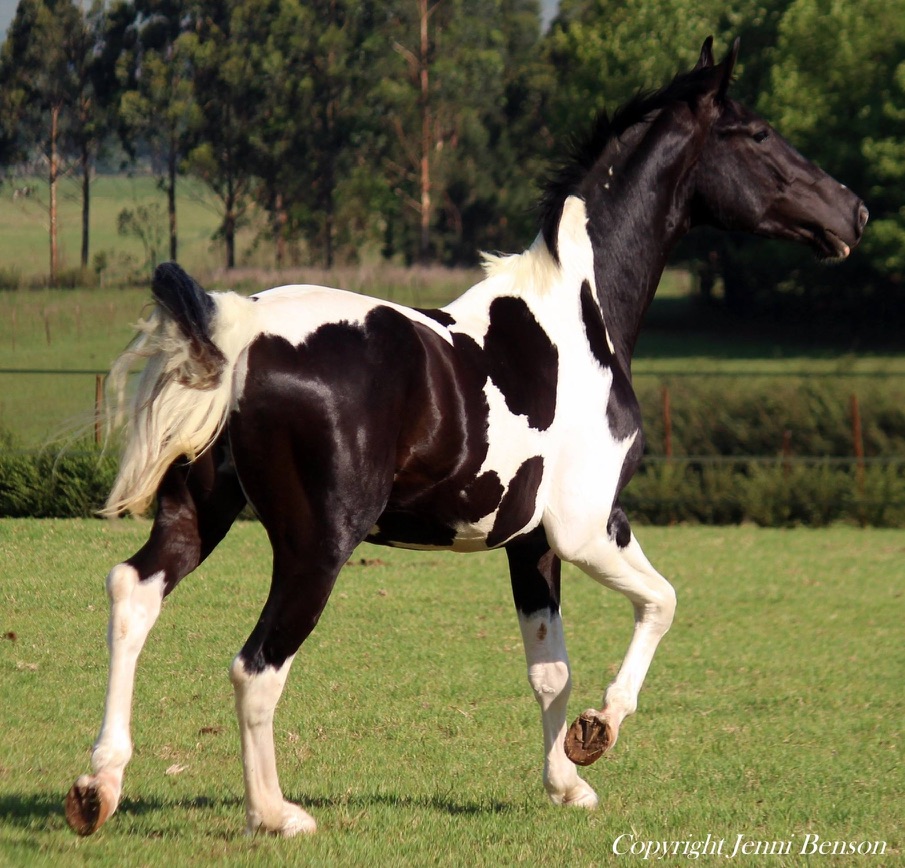
Conclusion
Responsible breeding practices are the cornerstone of producing healthy, high-quality horses. By carefully selecting breeding pairs, maintaining detailed records, providing excellent care, and continuously educating ourselves, we can ensure our horses’ well-being and the breed’s future.
The health and well-being of our horses must always come first. From the initial selection of stallions and mares to the ongoing care of foals, every decision we make as breeders should prioritize their physical and emotional health. This commitment not only benefits the individual animals but also contributes to the overall strength and sustainability of the horse population.
As breeders, we have a responsibility to uphold and promote ethical breeding practices. By adopting these guidelines and striving for continuous improvement, we can set a positive example for others in the industry. Let’s work together to create a brighter future for our horses, ensuring they lead healthy, fulfilling lives and continue to thrive for generations to come.
Join me in committing to responsible breeding. Together, we can significantly impact the well-being of our beloved horses and the integrity of the breeds we cherish.
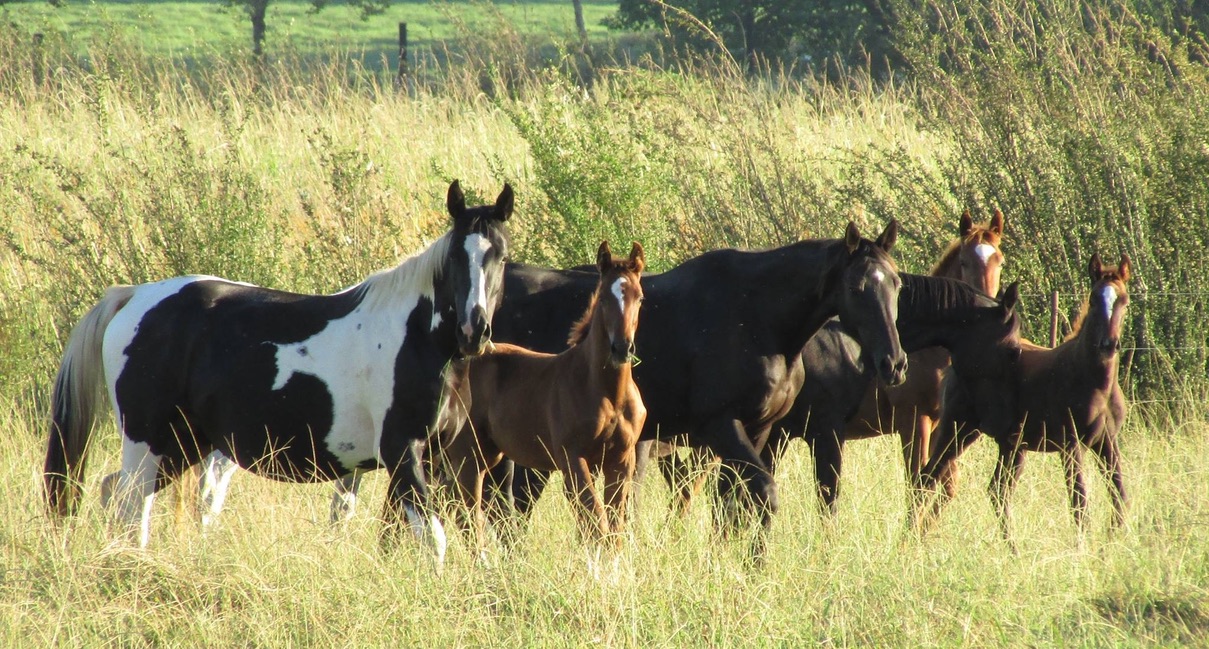
Further Resources for Responsible Horse Breeding
For those interested in deepening their knowledge and understanding of responsible horse breeding, here are some valuable resources:
Books
- “The Complete Book of Horse Breeding” by William H. Young
- An extensive guide covers all horse breeding aspects, from genetics to foal care.
- “Horse Genetics” by Ann T. Bowling
- A comprehensive book on equine genetics, providing detailed insights into hereditary traits and genetic disorders.
- “Equine Reproductive Physiology, Breeding, and Stud Management” by Mina C. G. Davies Morel
- This book offers an in-depth look at the physiology and management of equine reproduction.
Websites
- The Horse (www.thehorse.com)
- An excellent resource for articles, research, and news on horse health and breeding.
- Equine Science Center (esc.rutgers.edu)
- Provides valuable information on equine health, breeding, and management from Rutgers University.
- American Association of Equine Practitioners (AAEP) (www.aaep.org)
- Offers a wealth of resources on equine veterinary care, including reproductive health and breeding guidelines.
Online Courses and Webinars
- Coursera: Equine Welfare and Management
- An online course that covers various aspects of equine care, including breeding and foal management.
- University of Edinburgh: Equine Nutrition
- A comprehensive course on equine nutrition, essential for breeding horses.
- Webinars from the American Association of Equine Practitioners (AAEP)
- Regularly hosts webinars on topics related to horse breeding, health, and care.
Organizations
- International Federation of Horseracing Authorities (IFHA)
- Provides guidelines and resources for responsible breeding practices in the racing industry.
- Breed-specific Associations
- Most breed associations, such as the American Quarter Horse Association (AQHA) or the Arabian Horse Association (AHA), offer resources, guidelines, and educational materials specific to their breeds.
- The British Horse Society (BHS)
- Offers courses, publications, and resources on various aspects of horse care and breeding.
Journals and Publications
- Journal of Equine Veterinary Science
- A peer-reviewed journal offering the latest research on equine health and breeding.
- Equine Veterinary Journal
- Publishes research on all aspects of equine veterinary science, including reproductive health.
- Equus Magazine
- Provides practical advice, research updates, and stories from the horse community, including breeding tips and guidelines.
These resources can help you stay informed about best practices, advancements, and the latest research in horse breeding. Prioritizing continuous learning and engagement with these materials will support responsible and ethical breeding practices.
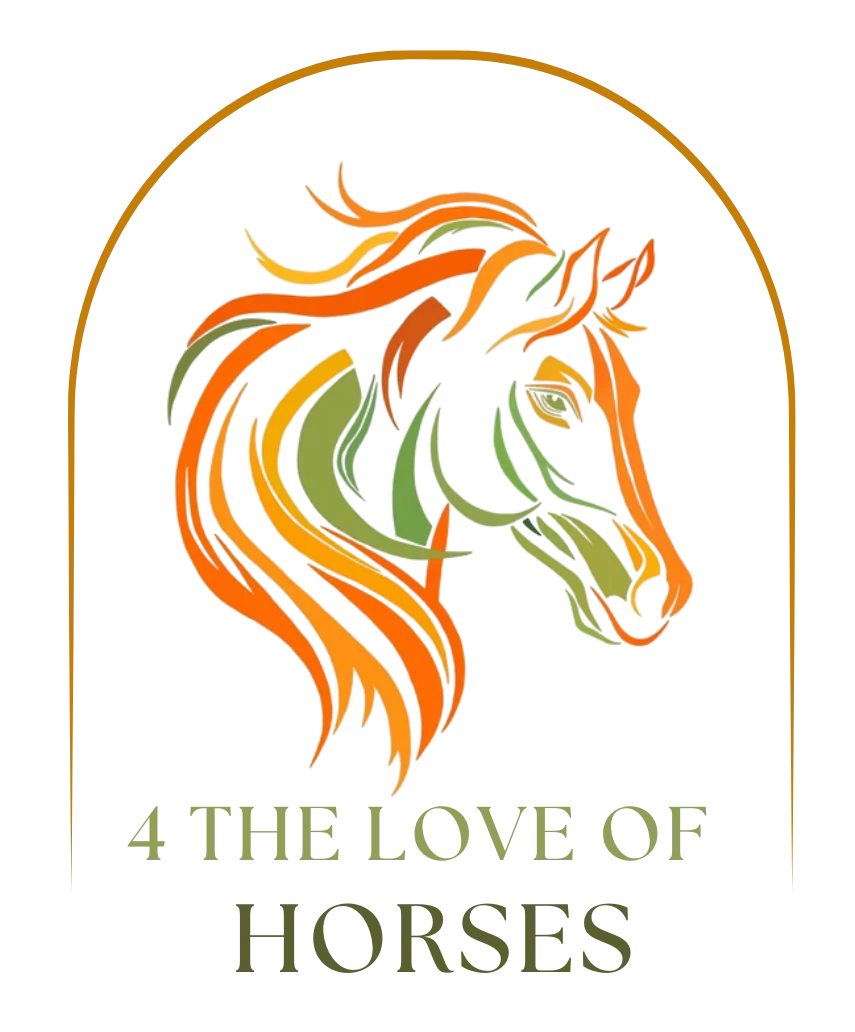
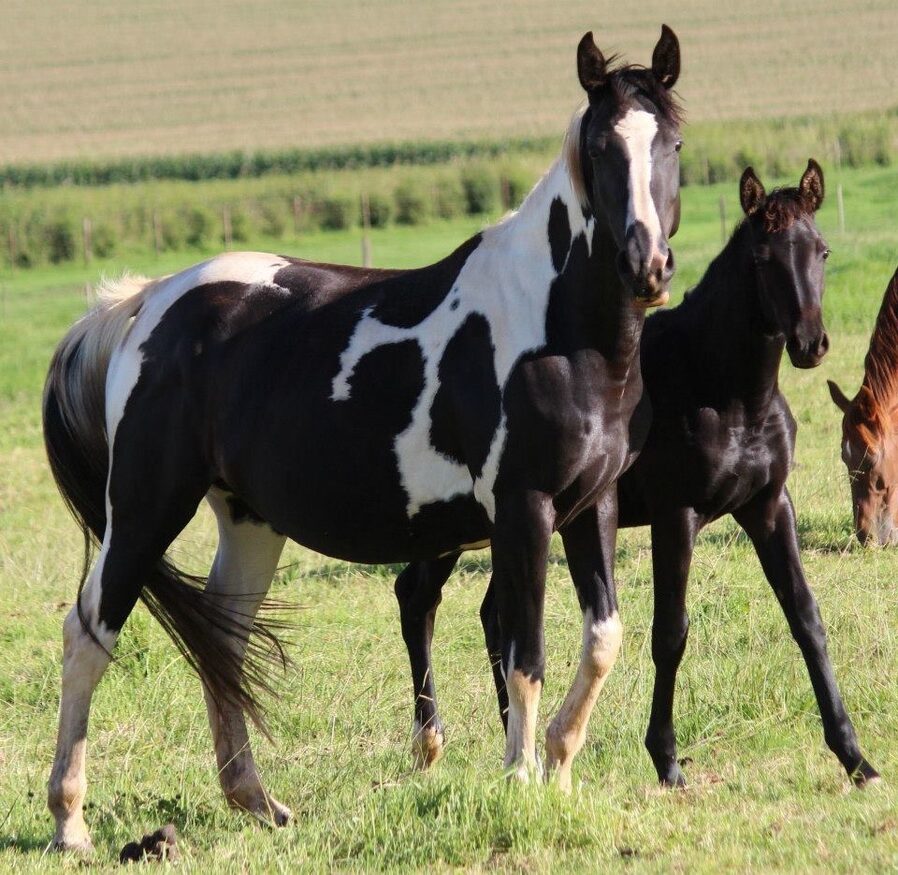
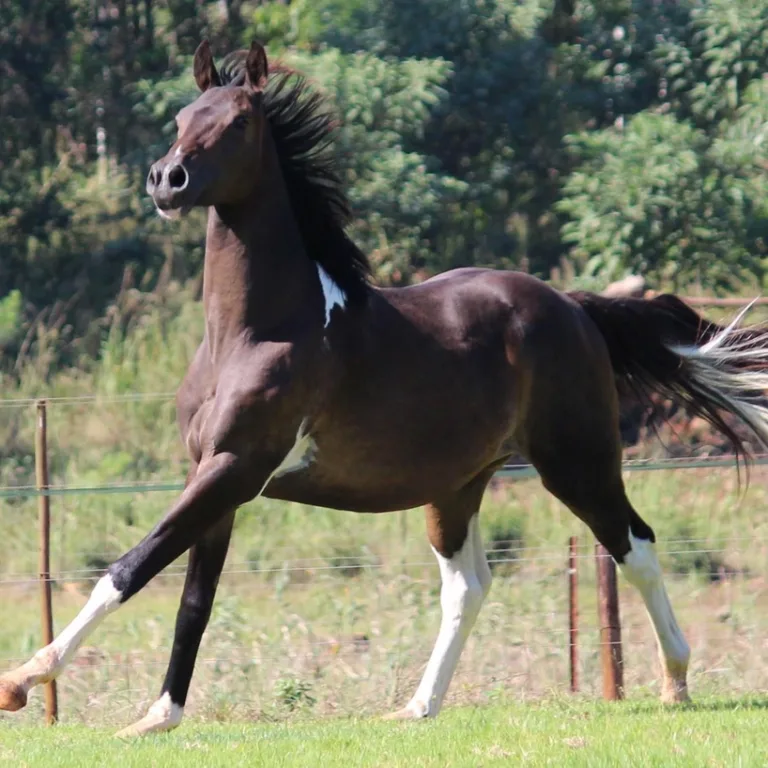
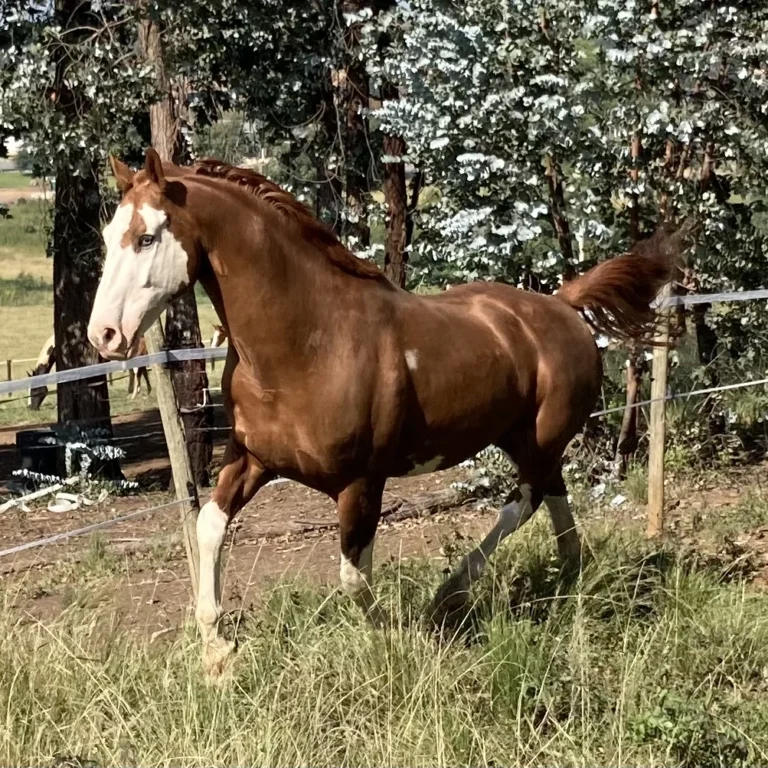


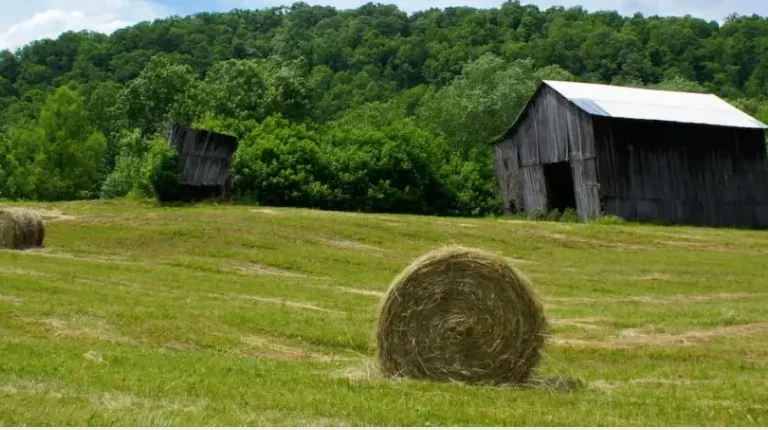

Leave a Reply